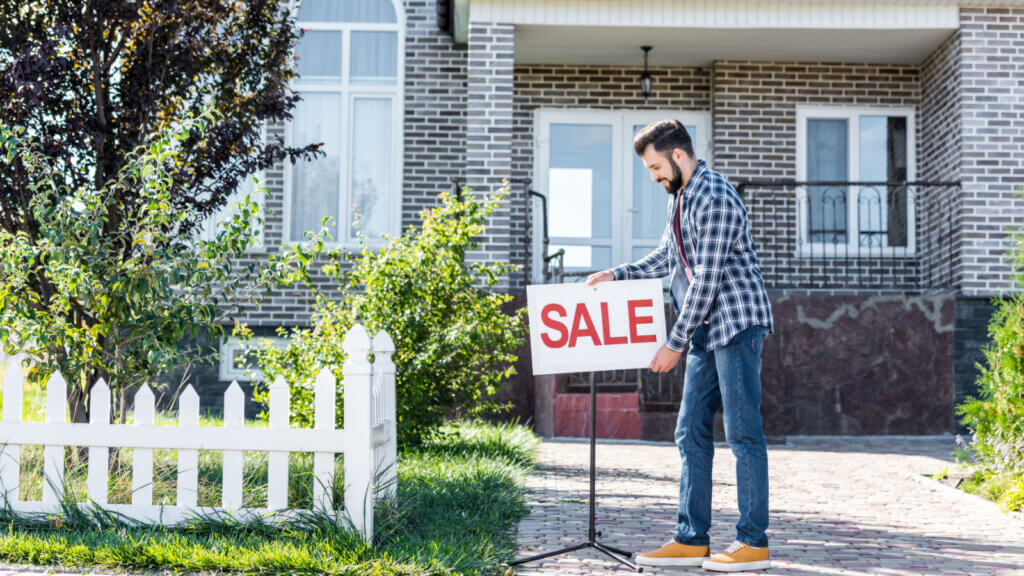When you need to sell your house now—because of a looming foreclosure, divorce, probate, or a costly roof leak—traditional real-estate timelines feel glacial.
This playbook shows you how to sell a house fast by the owner, price it right the first time, and leverage cash buyers when speed and certainty matter most.
Is Selling Your House Fast by Owner the Right Move?
Selling without an agent (the FSBO route) gives you more control and can spare you the 5 %–6 % listing commission. But it also means you’ll handle:
- Pricing, marketing, and showings
- Negotiations and buyer screening
- Contracts, disclosures, and closing coordination
FSBO fits best if you:
- Need to close in 30 days or less
- Own a property that needs repairs you can’t afford
- Already have buyer leads (e.g., a tenant or neighbor)
- Want a direct cash offer with zero contingencies
Quick decision matrix: If time ranks higher than maximum price on your priority list, FSBO + cash buyer is likely your fastest exit.
Price It Right the First Time
The 48-Hour DIY Market Analysis
- Pull comparable sales (comps) from the last 90 days within one mile—same bed/bath count and similar condition.
- Adjust for differences (+/- $5K–$10K per major feature).
- Calculate the median sold price of 3–5 true comps.
- Subtract “speed factors”:
- 1 %–2 % if your house needs cosmetic updates
- 3 %–6 % if it needs major repairs (roof, HVAC, foundation)
- Set your asking price ≤ 2 % above the final figure—this invites a bidding war rather than crickets.
Avoiding Common Pricing Pitfalls
- Sentimental value ≠ market value—buyers pay for square footage and condition, not memories.
- Chasing the market—if you must reduce, do it by at least 2 % every 14 days to stay competitive.
- Ignoring cash-buyer math—investors need room for repairs and resale profit; expect offers 70 %–80 % of the after-repair value.
Marketing Moves That Attract the Right Buyers
Craft a Compelling Listing
Tell a story in the first two lines: “Skip the contractor bids—this charming 3-bed home is priced for a quick cash close.” Highlight:
- Unique perks (big yard, school district)
- Recent improvements (new water heater)
- Flexibility (close in as little as seven days)
Photos & Virtual Tours

- Hire a professional photographer. According to PhotoUp/World Metrics, homes with pro photos attract 118 % more online views.
- Add a 60-second vertical video tour for social feeds; buyers scroll the video first, and captions second.
- Use a 360° virtual walk-through so out-of-state cash investors can buy sight-unseen.
Where to List
- Flat-fee MLS service—gets you on the Multiple Listing Service without a listing agent.
- Facebook Marketplace & local groups—great for investor eyeballs.
- Dedicated cash-buyer sites like iBuyHomes.com—instant exposure to verified investors nationwide.
Boost Curb Appeal on a Budget
| Upgrade | Avg. Cost | Typical ROI | Time Needed |
|---|---|---|---|
| Mulch & fresh flowers | $150 | 3× | 1 day |
| Power-wash siding | $200 | 2× | Half-day |
| Paint the front door | $75 | 4× | 2 hours |
| Solar walkway lights | $90 | Aesthetic | 1 hour |
| New mailbox numbers | $25 | Presentation | 30 min |
According to the National Association of Realtors (NAR), 92% of real estate agents say curb appeal is the quickest way to shorten days on the market. Even if you plan to sell “as is,” pressure-washed driveway signals you’ve maintained the home.
Declutter, Deep Clean & Stage Strategically
The 3-Bin Declutter Method
- Keep—items you’ll use in the next 30 days.
- Donate/Sell—non-essentials in good shape.
- Storage—personal photos, seasonal décor, bulky furniture.
Box it, label it, and move it out of sight.
Quick-Hit Staging Tips
- Swap heavy curtains for sheer panels to maximize light.
- Place a mirror opposite the largest window—instant room enlargement.
- Add fresh, neutral bedding to every bedroom.
- Use subtle scent diffusers (citrus or linen) before showings.
Remember: Buyers purchase a lifestyle, not your belongings.
Understanding Closing Costs and Paperwork
Even without an agent, expect:
- Title search & insurance: $500–$1,500
- Recording & transfer taxes: state-specific
- Attorney or escrow fees: $800–$1,200
- Staging/marketing outlay: optional but wise
Cash buyers often absorb many of these line items.
Cash Offers 101: How They Work & When They Make Sense
Traditional vs. Cash Timeline
| Milestone | Mortgage Buyer | Cash Buyer |
|---|---|---|
| Offer accepted | Day 0 | Day 0 |
| Inspection | Day 7-10 | Optional / waived |
| Appraisal | Day 15-18 | None |
| Financing approval | Day 25 | None |
| Closing | Day 35-45 | Day 7-14 |
Pros and Cons of Accepting a Cash Offer
Pros:
- Speedy Closing (Sell Quickly): An all-cash offer bypasses the lengthy mortgage approval sales process, which typically involves underwriting and appraisals that can take weeks. Because the buyer has funds readily available and lender involvement is eliminated, closing can often happen remarkably fast – sometimes in as little as 7 to 14 days after the offer is accepted, allowing sellers to sell fast and access their equity much quicker than aiming for the potentially higher best price through a longer traditional sale.
- “As-Is” Sale (Avoid Repairs & Showings): A significant advantage is selling your property based on how the home stands currently, without needing repairs. Cash buyers typically purchase “as is,” saving you time and money on renovations. This approach also often means avoiding the constant disruption of scheduling numerous home showings required for a traditional listing aimed at attracting financed buyers.
- Increased Certainty for a Successful Sale: All cash offers inherently remove the financing contingency – a common reason traditional sales fall through. Often, the appraisal contingency is also waived. While an inspection might still occur, the overall reduction in contingencies significantly lowers the risk of the deal collapsing before closing, offering the seller greater peace of mind and a higher likelihood of a successful sale.
- Reduced Transaction Complexity & Costs: With no lender involved, the closing sales process is notably simpler and avoids potential delays tied to underwriting or appraisal issues. Furthermore, certain lender-associated fees are entirely absent, streamlining the financial aspects of the closing compared to a conventional sale.
Cons:
- Lower Purchase Price: The most significant trade-off for the speed and convenience is typically the final purchase price. Cash buyers, often investors, calculate their offers factoring in repair costs for the “as-is” property, holding expenses, and their required profit margin. Consequently, their offers are frequently 10% to 15% below what the home might achieve if seeking the absolute best price on the open market, especially in a strong seller’s market with a traditional, financed buyer.
- Buyer Vetting Required: The cash offer landscape includes various types of buyers, from large companies active in select markets to smaller, local investors. It’s essential for sellers to perform due diligence on any party making an all cash offer. This involves researching the buyer’s reputation, track record, and legitimacy to avoid unreliable parties who may not actually close the deal.
- Verification of Funds is Crucial: While an all cash offer eliminates financing risks, sellers must rigorously verify the buyer possesses the necessary funds. Requesting clear proof of funds early is critical. This verification is paramount as the earnest money deposit might sometimes be lower than in traditional deals, making confirmation of the buyer’s ability to cover the full purchase price essential.
Lightning-Fast Negotiations & Buyer Communication
- SMS Auto-Reply: “Thanks for your offer! I’ll review and respond within 4 hours so we can keep things moving.”
- Set a response deadline (24 hours) to maintain urgency.
- Be flexible—if a buyer requests a one-day inspection, agree if they waive repairs beyond $1,000.
- Document everything via email for legal clarity.
Tech Tricks to Speed Up Your FSBO Sale
- e-Signature platforms (e.g., DocuSign) shave days off paperwork.
- Digital lockboxes let buyers’ agents access safely without you arranging schedules.
- AI-powered pricing apps (HomeLight, Zillow Research) double-check your number against live market shifts.
Action Plan: Your Next 7 Days to “Sold”
-
Day 1: Research and Analysis
Pull comps, finish 48-hour pricing analysis.
-
Day 2: Property Preparation
Power-wash exterior; declutter living areas.
-
Day 3: Create Marketing Assets
Shoot pro photos & 60-second video tour.
-
Day 4: Go Live with Listing
List on flat-fee MLS + iBuyHomes Cash Offer portal.
-
Day 5: Initial Buyer Engagement
Host first showings; review inbound investor bids.
-
Day 6: Offer Selection
Negotiate, counter via SMS, and choose the strongest cash offer.
-
Day 7: Closing Process Begins
Open escrow, schedule seven-day closing—celebrate progress!
Conclusion: Take the Fast Track with Confidence
Selling a house fast by owner is absolutely doable when you combine accurate pricing, laser-focused marketing, and the right cash-buyer partnerships. Whether you need to dodge foreclosure, unload a tired rental, or split assets in a divorce, following this playbook turns “For Sale” into “Sold” in record time.
Frequently Asked Questions
Pricing your home competitively from day one is the single biggest lever. List within 1–2% of fair market value, add irresistible photos and launch across the local market MLS plus cash-buyer sites that “buy houses.” A spotless interior, deep cleaning, and boosted home’s curb appeal sharpen first impressions so potential buyers feel urgency—which is exactly what turns a listing into a home sold in days, not months.
Start with a weekend makeover: mow, mulch, declutter, and stage key rooms. Next, create maximum access—weekday showings, twilight appointments, and back-to-back open houses—because buyers shop on their own schedules. Finally, communicate like lightning: respond to offers within hours and keep the selling process moving so you stay top-of-mind in a competitive housing market.
The FSBO process puts you in charge of the entire closing process. Use a real-estate attorney or title company to handle contracts, disclosures, and escrow. Confirm the buyer’s funds (or their mortgage lender’s approval), schedule inspections, and sign via e-signature. When you stay organized, you pocket the commission savings yet still guide the home sale to a smooth, on-time finish.
Selling solo can mean more money in your pocket because there’s no listing fee—but you’ll face own challenges: marketing, negotiations, and paperwork. If you’re comfortable screening home buyers, coordinating repairs, and handling legal forms, FSBO delivers control and potentially a higher sale price. Otherwise, an experienced real estate agent may net you a similar—or even higher price—while managing the whole process.
A reputable real estate investor closes in as little as seven days, buys the house quickly “as is,” and skips appraisal contingencies—ideal when a rental property has tenants or when family emergencies demand speed. Traditional financed buyers typically pay closer to fair market pricing but need 30–45 days and can stumble over lender conditions. Choose the route that aligns with your timeline and risk tolerance.
Fair market value is based on recent home prices for similar properties in your zip code, adjusted for size, condition, and upgrades. Pull three to five comps closed in the past 90 days, then tweak for features like a new roof or finished basement. Pricing at the right price attracts a pool of buyers quickly while still leaving room to negotiate for top dollar.


